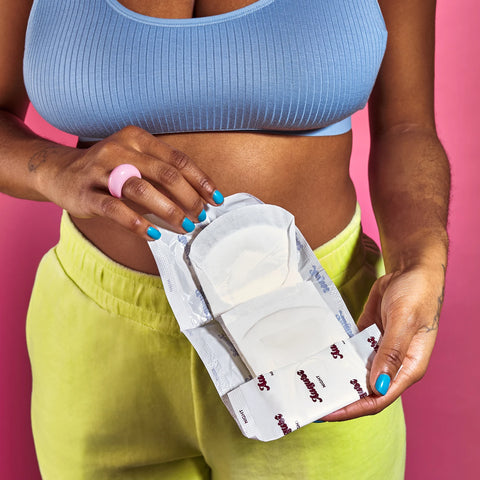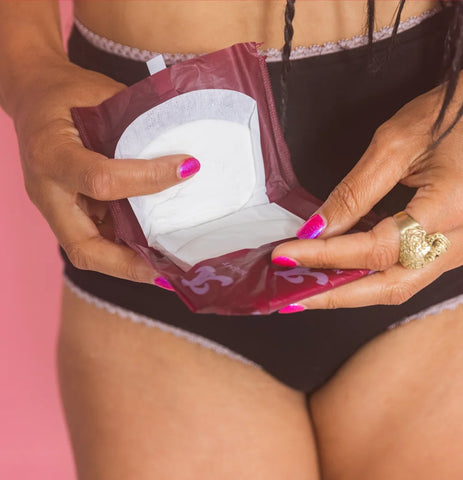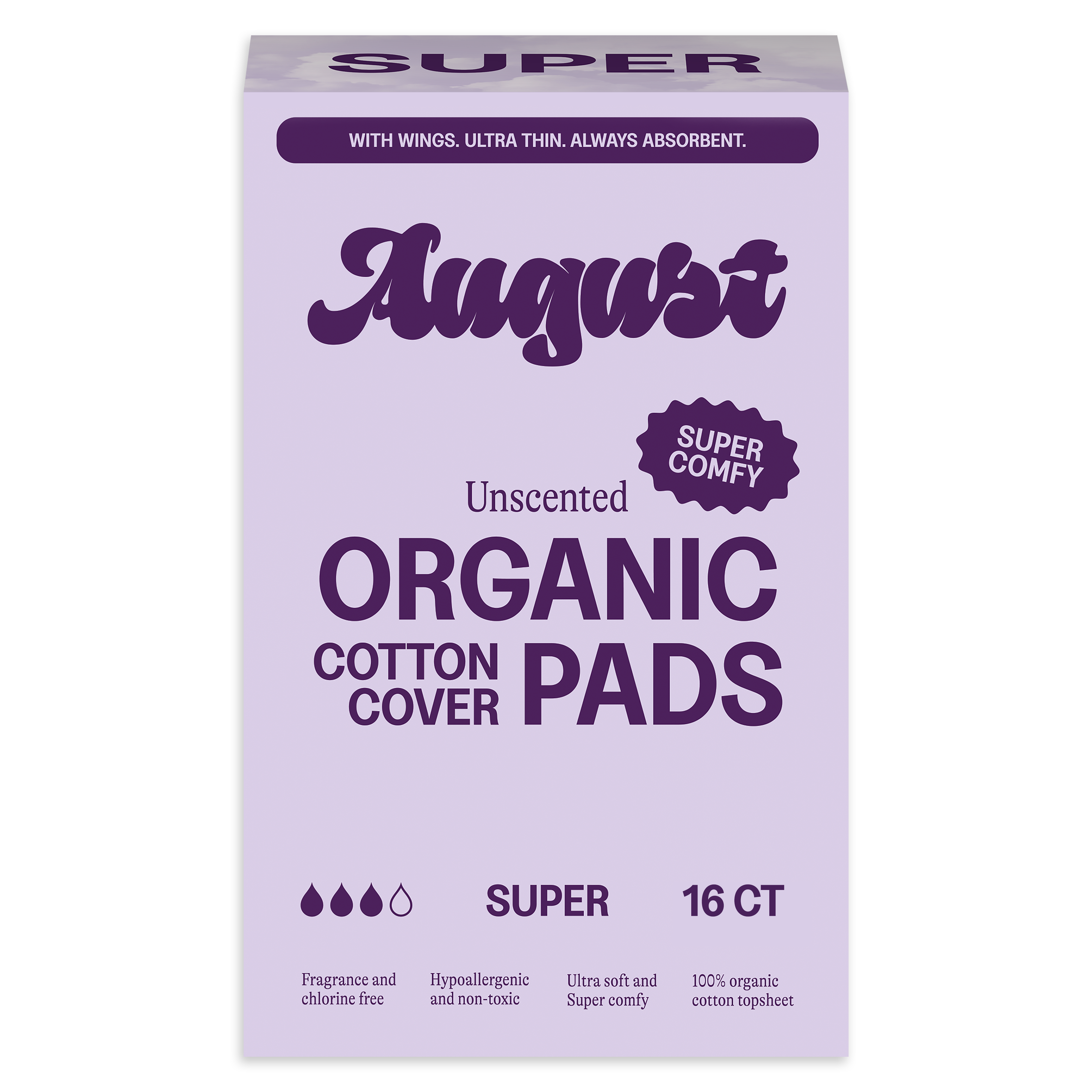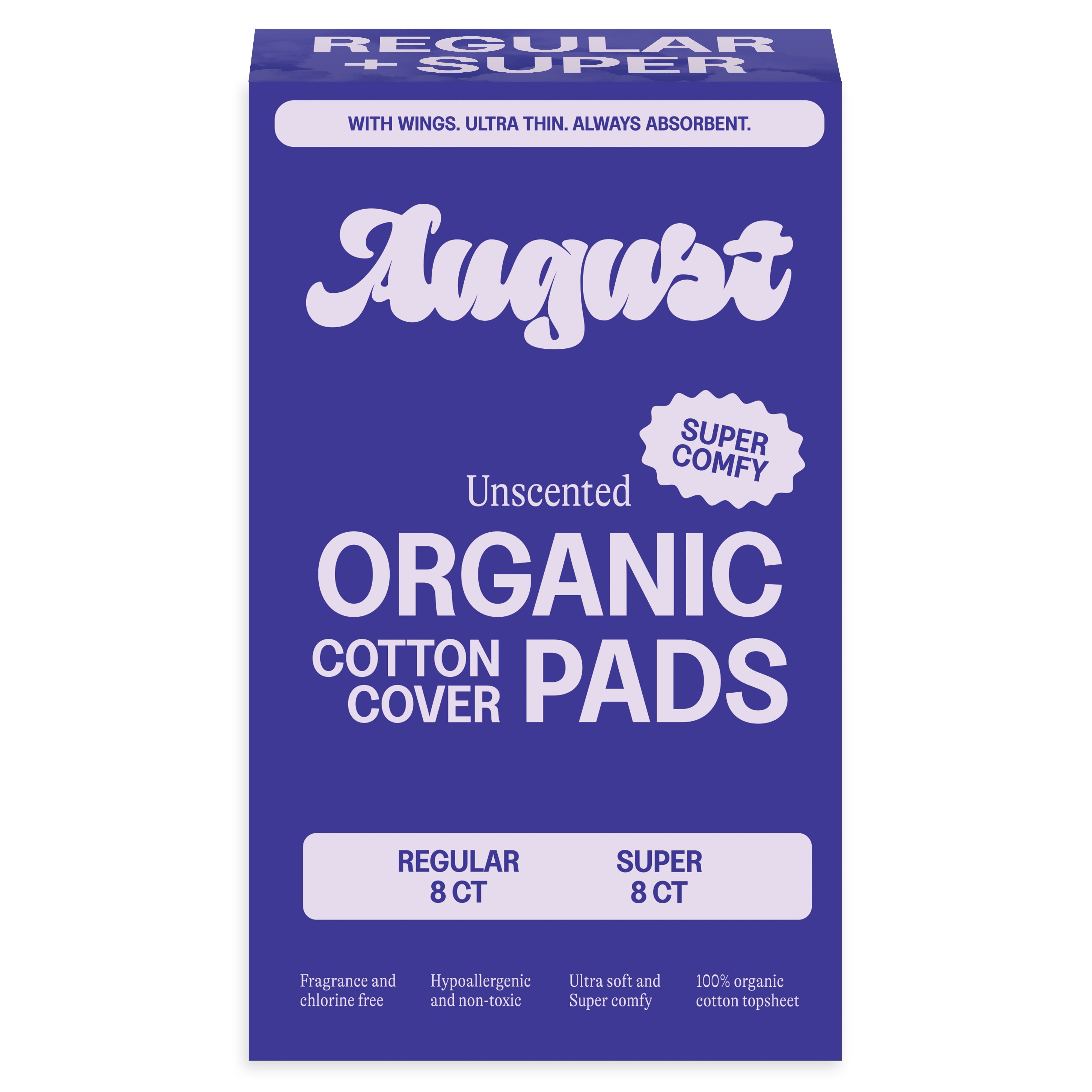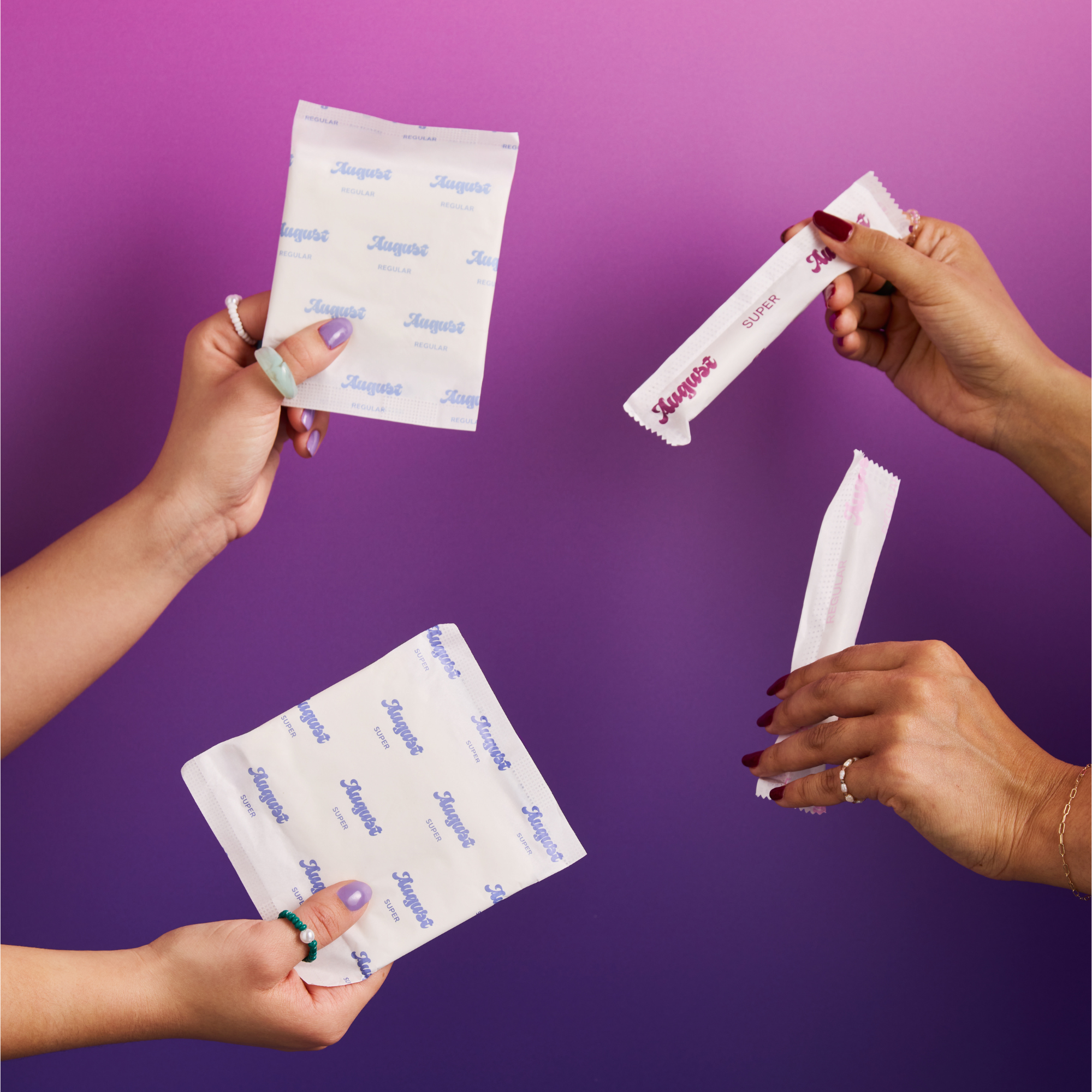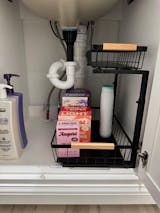Menstruation, otherwise known as ‘a period’, commonly happens every 21-35 days, after the monthly egg has been released from the ovaries and the uterus has developed a thick inner lining.
The egg is released at the midpoint of a person’s cycle (aka ovulation), for the purpose of pregnancy. However, if the egg doesn’t achieve fertilization, pregnancy won’t occur. Instead, the lining of the uterus is shed and other fluids in the process of menstruation.
In a typical situation, menstrual flow part of the cycle will usually last somewhere between 3-8 days. However, there are many menstrual disorders that can cause irregularities, physical symptoms or severe emotional fluctuations.
Most of these disorders are widely underdiagnosed but, with special attention and mitigation plans, can be managed – or even treated.
Keep reading for a list + explanation of common menstrual disorders.
Premenstrual Syndrome (PMS)

Arguably the most basic ‘period disorder’ would be Premenstrual Syndrome.
PMS has historically been made out to be ‘hysteria’ or exaggeration, but we’re here to bust that myth!
It’s important to remember that PMS may be common but has been normalized. That is, although many people experience symptoms, there are often solutions based on potential underlying, but unknown, issues. For example, hormonal imbalance.
Symptoms may vary from person to person but the most common symptoms are:
- Irritability & mood swings
- Fatigue
- Breast soreness
- Acne
- Cramps
- Cravings or other changes to appetite
- Bloating and tummy pain
PMS can be reduced with diet and lifestyle changes, and emotional support.
If you’re a first-time menstruator learning about PMS & your period for the first time, read this article: 7 Signs that Your First Period is Coming
Menorrhagia

Menorrhagia, also known as: heavy bleeding.
An average amount of blood flow to lose over the duration of a menstrual period is about 80mL (2-3 tablespoons). People with menorrhagia typically produce more than twice that amount.
That being said, blood only makes up about 36% of menstrual flow, so the quantity of menstrual fluid lost (and absorbed by period products) during a period is closer to 111mL.
The CDC estimates that more than 10 million Americans have menorrhagia.
If you’re looking to try pads or tampons that ACTUALLY work, build your personalized box of period care on itsaugust.co.
Amenorrhea

Amenorrhea aka the loss of a period affects about 3-4% of menstruating people.
It’s important to distinguish the difference between primary amenorrhea and secondary amenorrhea.
Primary amenorrhea is usually defined as not having a period by age 15. This can be caused by chromosomal or genetic problems with the ovaries.
Secondary amenorrhea refers to missing 3 or more periods in a row when you already had a period. Some causes of secondary amenorrhea are:
- Pregnancy
- Perimenopause
- Stress
- Diet
- Birth control
- Excessive exercise
- and medical conditions including celiac disease, thyroid disease, and PCOS
Read this interview, featuring Team August’s very own: Elena Gadekar (she/her), who shares her knowledge on amenorrhea, as a retired ballet dancer.
Dysmenorrhea

Dysmenorrhea is the medical term for any and all pains that have to do with menstruation.
Prostaglandins, aka the chemicals that trigger muscle contractions in your uterus, are the cause of menstrual cramps and minor pain. Unfortunately, these chemicals are necessary to help the uterine lining shed! But, too many are a problem.
A study published to the National Library of Medicine reported that approximately 55% of respondents use medication, or that their social plans suffer, due to menstrual pain.
THIS is your PSA that severe period pain is NOT normal and may indicate you have an underlying period disorder that needs diagnosing.
For example, a diet that is high in inflammatory foods and sugar can lead to the release of more prostaglandins which can lead to painful periods.
Check in with your doctor about ongoing pain or irregularities, especially if the pain is lasting for more than 2-3 days.
The following disorders are examples of heavy period flow, period pain, and other menstrual symptoms.
Endometriosis

Endometriosis has many contesting definitions but, at its most basic description, it's a chronic, systemic disease where the growth of endometrial-like tissue grows outside of the uterus in various places beyond the pelvis. For example, in other organs such as: your bowels, kidneys, liver, and in severe cases, even in your lungs, brain and sinuses.
Throughout the stages of the menstrual cycle, the endometrial-like tissue potentially acts as endometrial tissue would — it thickens, breaks down and bleeds with each menstrual cycle. But because this tissue has no way to exit your body, it becomes trapped.
It can cause issues ranging from ovarian cysts (endometriomas) to implants throughout the pelvis and body and contributes to infertility. Endometriosis affects 1 in 10 menstruators between ages 15 and 49, but can take anywhere from 4 to 11 years to diagnose. Therefore, many people suffer in silence for too long.
Learn more about the diagnosis, treatment, and impacts of endometriosis HERE. And if you think that you may have endo, check in with your doctor so you can start the process of getting diagnosed ASAP!
Polycystic Ovary Syndrome (PCOS)

Polycystic Ovary Syndrome (PCOS) is a hormonal disorder that affects 6-12% of Americans with a uterus who are of reproductive age.
People with PCOS have inconsistent and prolonged menstrual cycles, they may not ovulate, and they may have many small cysts on their ovaries. These are the results of low-grade inflammation, high blood sugar or excess insulin levels, genetic links, and excess androgens (aka hormones).
Get to know the symptoms and treatment options for PCOS in this medically verified blog post.
Uterine Fibroids

Uterine fibroids are benign (aka non-cancerous) muscular tumors that form within the walls of your uterus.
Most people (up to 70%) with a uterus will have a fibroid or two within their life, but most will remain small and never cause any symptoms or problems.
In some people, however, fibroids can grow and may cause pain and heavy menstrual bleeding.
There is no specific cure but they can be surgically removed and there are lots of ways to manage symptoms and pain.
Never heard of uterine fibroids and want to learn more? Read this.
Premenstrual Dysphoric Disorder (PMDD)

The hormonal changes that trigger a menstrual period can worsen a person’s mental health, especially if that person has underlying mood disorders like PMDD.
Premenstrual Dysphoric Disorder (PMDD) is a severe form of PMS that 5% of menstruators experience.
PMDD differs from PMS in the way that its symptoms present. They are more severe and not as short-lived. PMDD can last 1-2 weeks and comes back in full swing with every menstrual flow.
If you are experiencing severe signs of depression, reach out to a trusted adult or friend, a mental health professional, or doctor. You are NOT alone in feeling down, especially during your period (half the world menstruates at some point in their life!)! <3
Hear more about PMDD from a Reproductive Psychiatrist in this article!
Menopause

Now, menopause isn’t a disorder, perse. But it does come with a lot of symptoms and irregularities!
Menopause, simply put, is a biological process that marks the permanent end of a person’s ability to reproduce and the hormonal changes that ensue after. The cause of a natural menopause is not just “running out of eggs” but the aging of the female ovaries. Eggs and the hormones that are normally produced during the menstrual cycle are functionally depleted at menopause.
Check out our informational piece on menopause, written in collaboration with Alloy Health! And if you want to hear some real #BeyondMyPeriod stories, check these out:
- From First to Final Periods: A Tale of 2 Sisters
- “Menopause was a Full Thelma and Louise Moment”: by Kate Muir (she/her)
- “Shame has No Place in this Conversation”: by Stacy London (she/her)
- “The Menopause Symptoms Came On Like A Fury”: by Monica Molenaar
- “Enjoy Your Body Right Now Just How It Is”: by Rachel Hughes
- “You’ve Always Been Enough”: by Amber Shaw
- “My Mom Was Open About Her Symptoms but she didn’t Necessarily Want to Draw Attention to it”: by Tiani Grosso
Toxic Shock Syndrome (TSS)

Last but not least, we wanted to quickly touch on Toxic Shock Syndrome (TSS). This is less of a disorder and more of a condition that, in some cases, is caused by period product use.
TSS is a serious, life-threatening condition caused by bacteria getting into the body and producing bad toxins.
Although tampons are the cause of 50% of TSS cases, it can also be caused by burns, boils, insect bites, post-surgery infections, infection after childbirth, and some barrier contraceptives made for vaginas.
This article will hopefully educate you on the symptoms of toxic shock syndrome, and relieve you of any major tampon fears!
No two periods are alike.
Some menstruators go through life with little to no concerns. Others, however, find themselves managing irregularities and pain during some, or all, of their reproductive years.
If you read this article and are thinking “WAIT, do I have a period disorder???” – don’t panic.
Instead, keep track of your symptoms, schedule an appointment with your healthcare provider, and make a plan from there.
It’s going to be okay.
p.s. August Period Care is here for you!

Subscribe to August Period Care to get products on your doorstep every month!
If you don’t get a period monthly, due to irregularities, go for the 3-month subscription option where a bulk order comes in every 3 months so you never have to worry about starting your flow without tampons, pads, or liners on hand!










